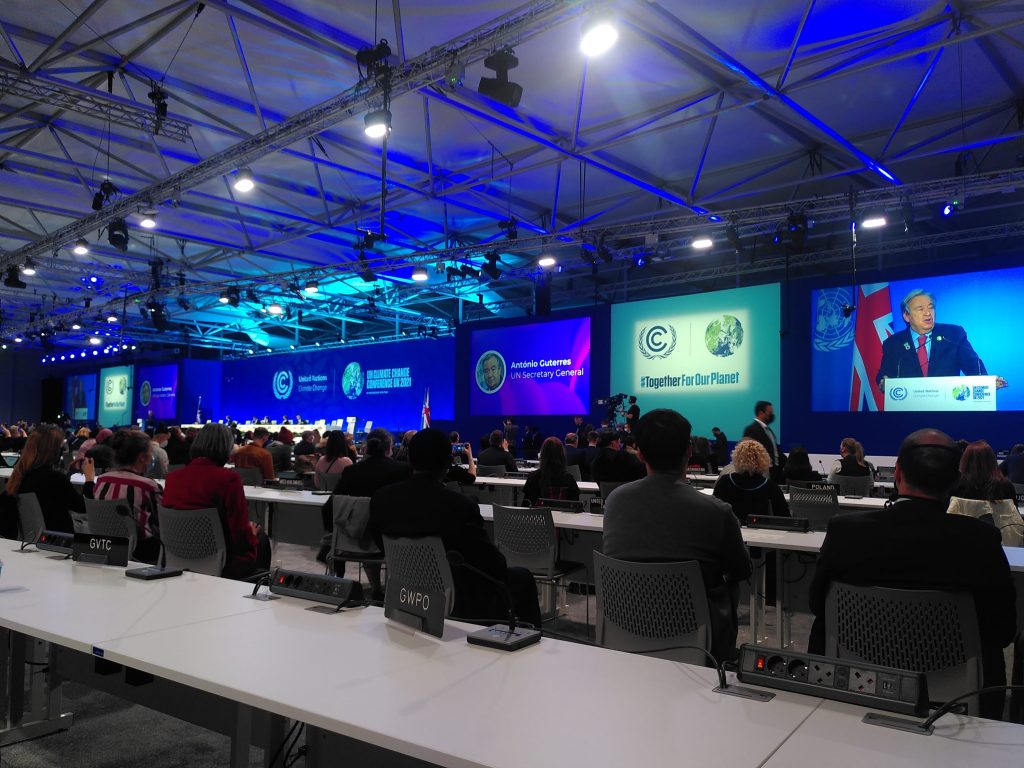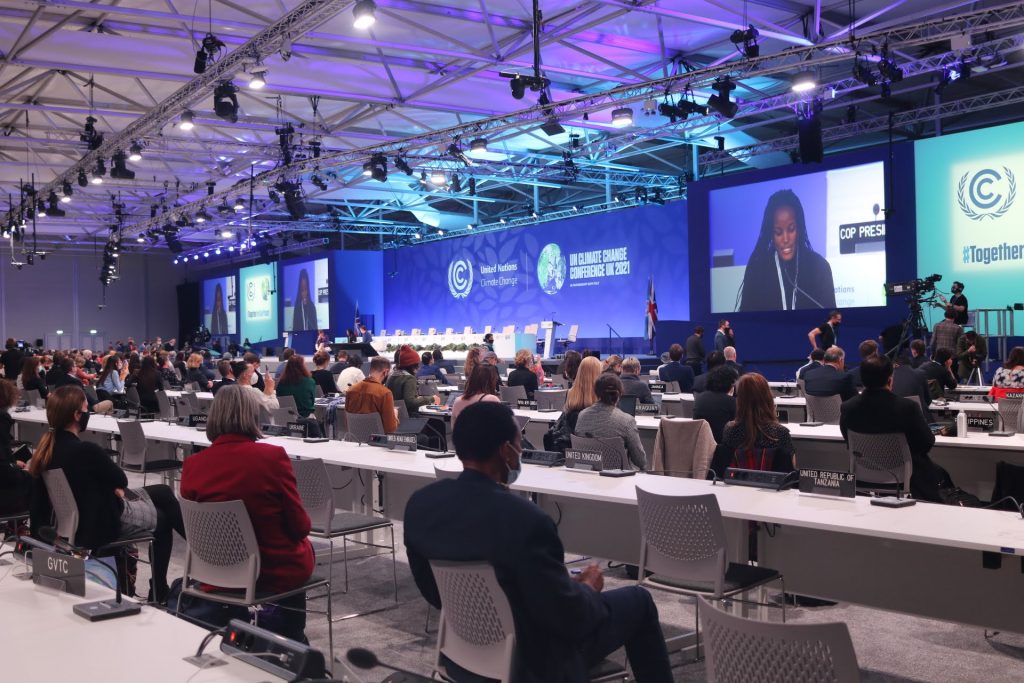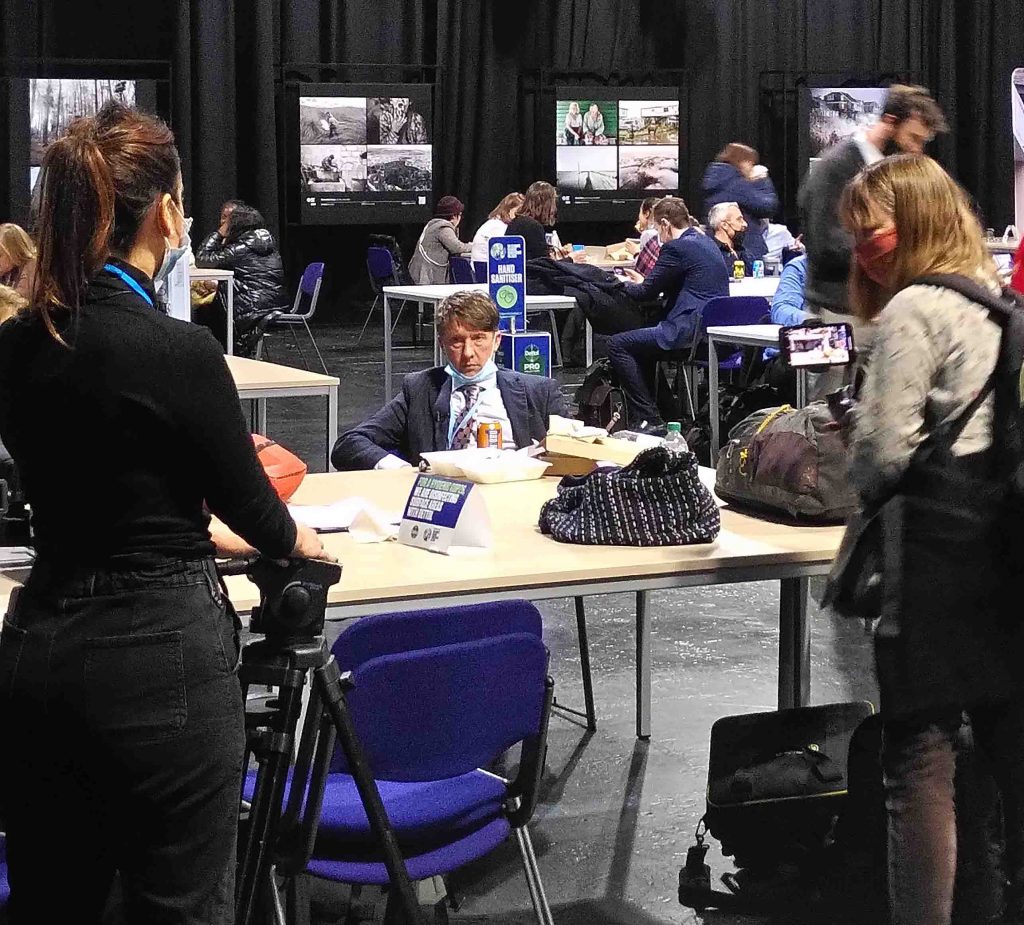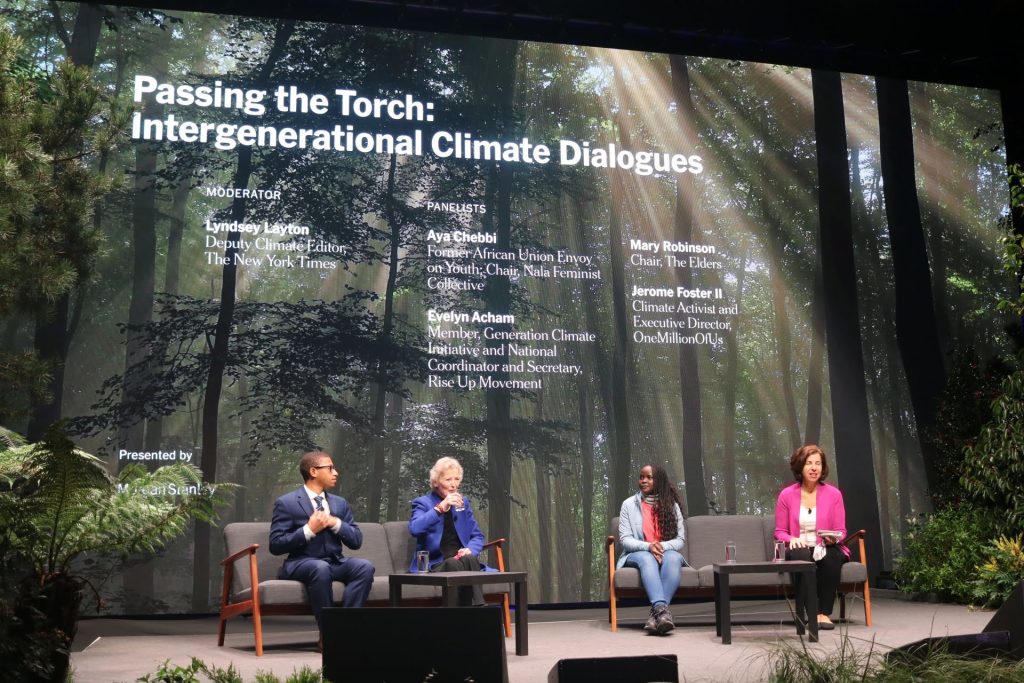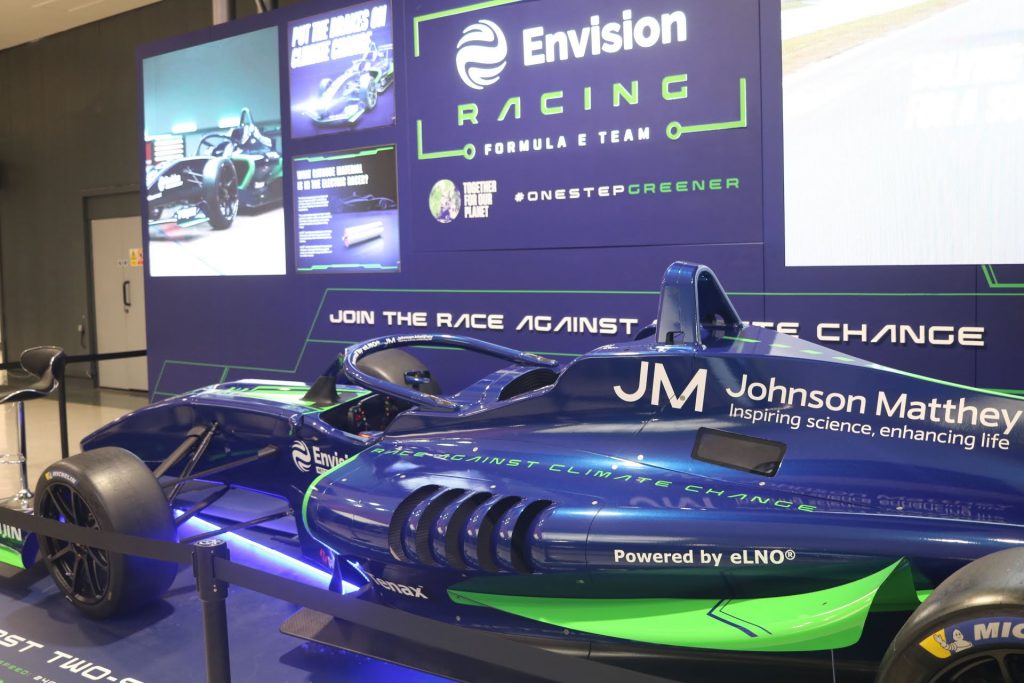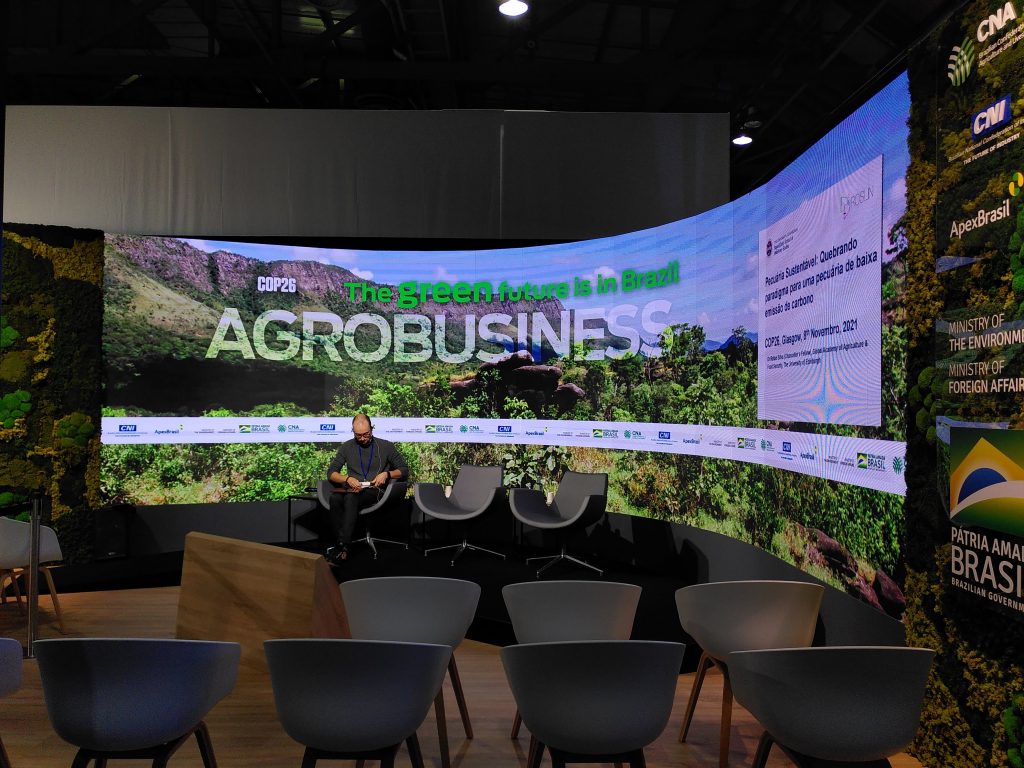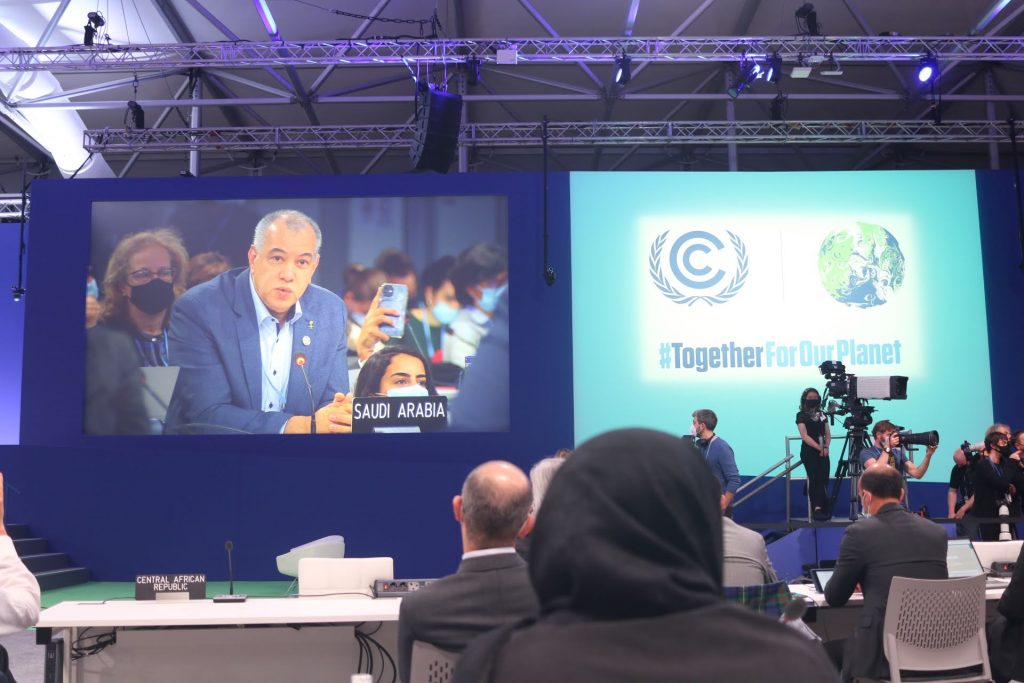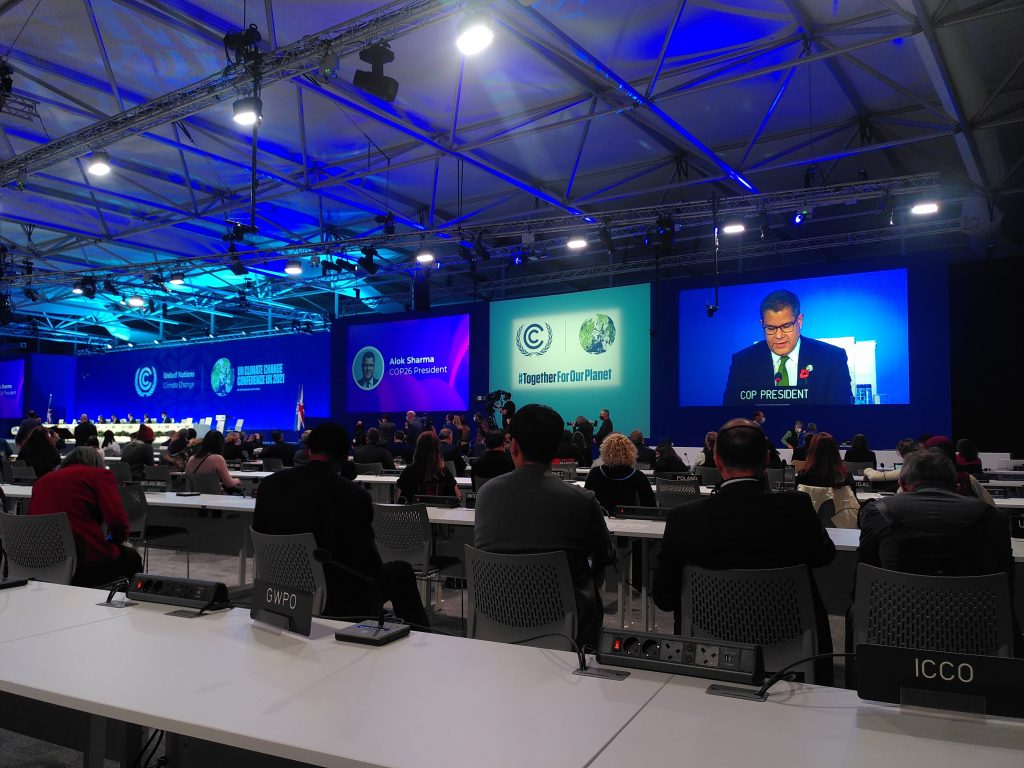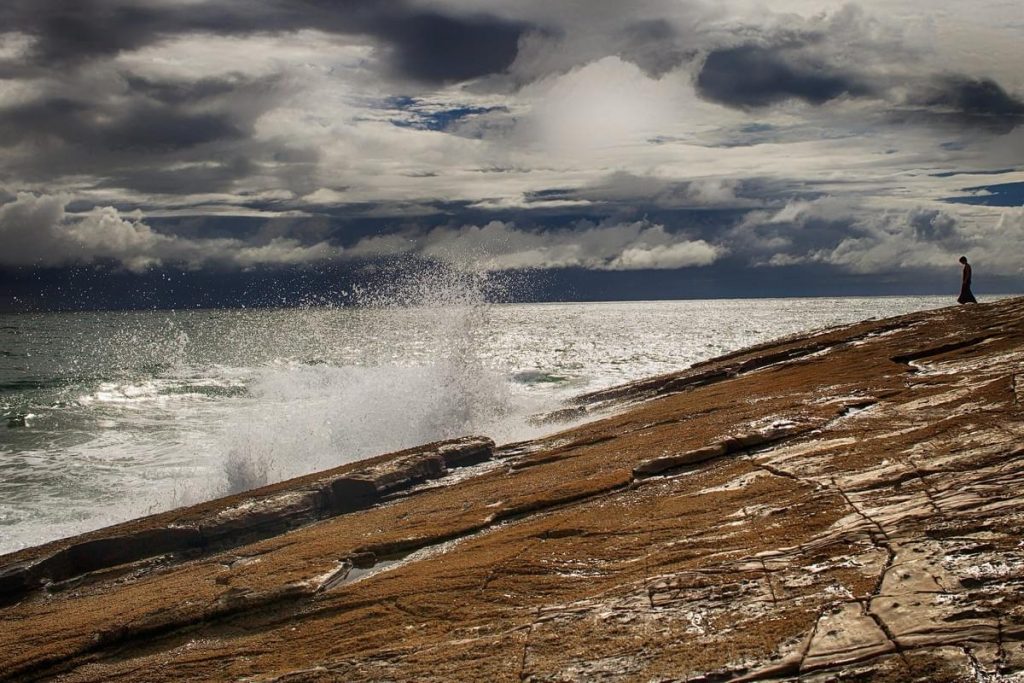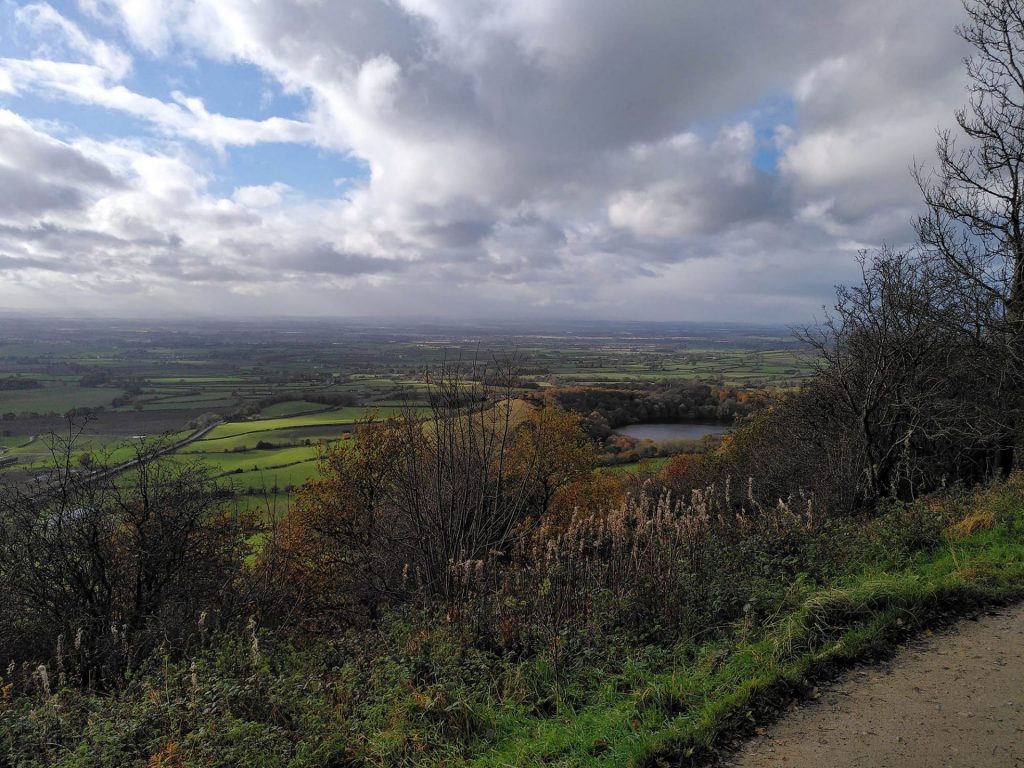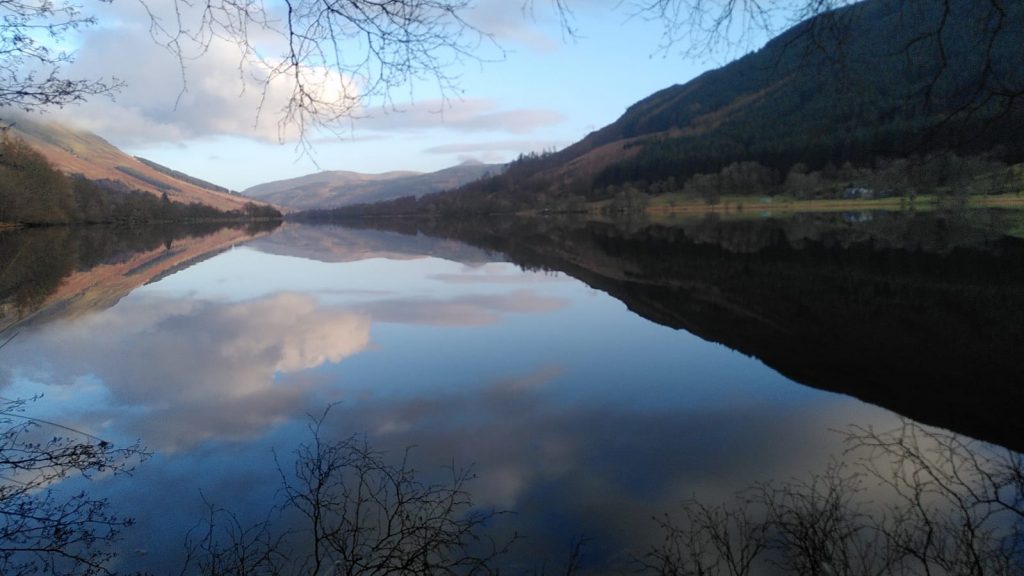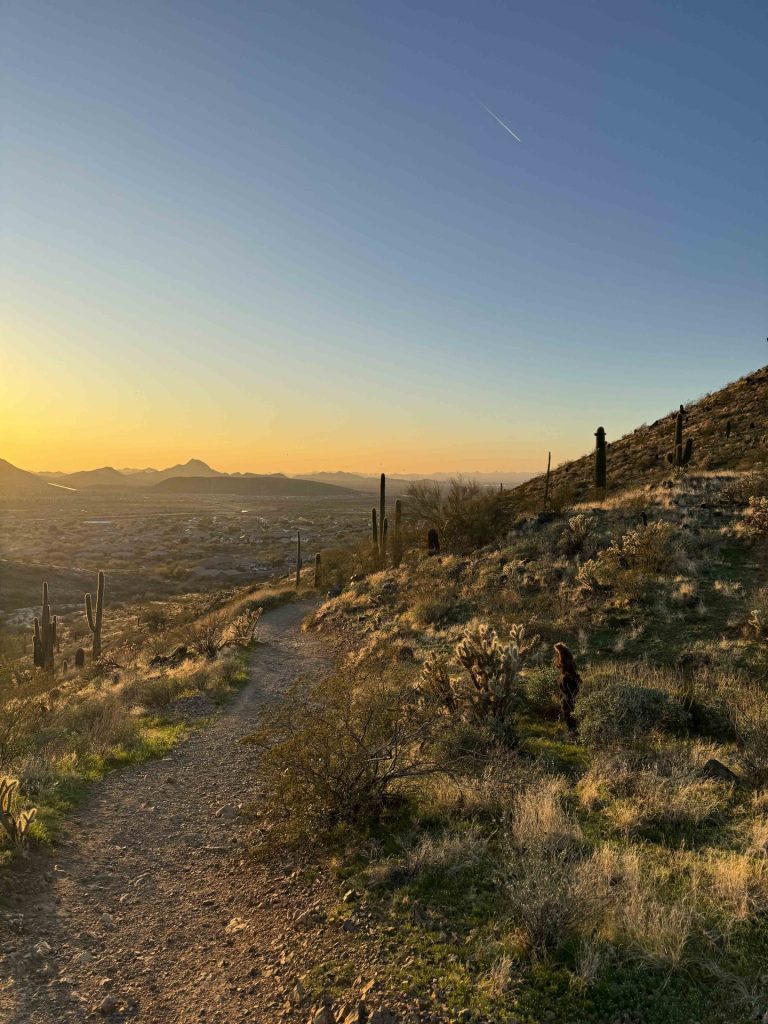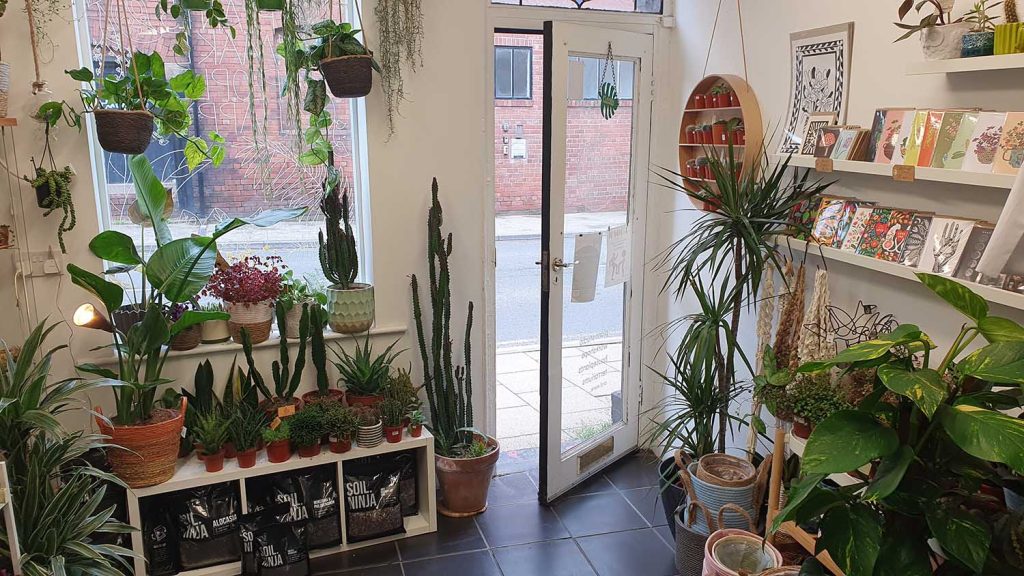COP26: First timer’s view from the inside
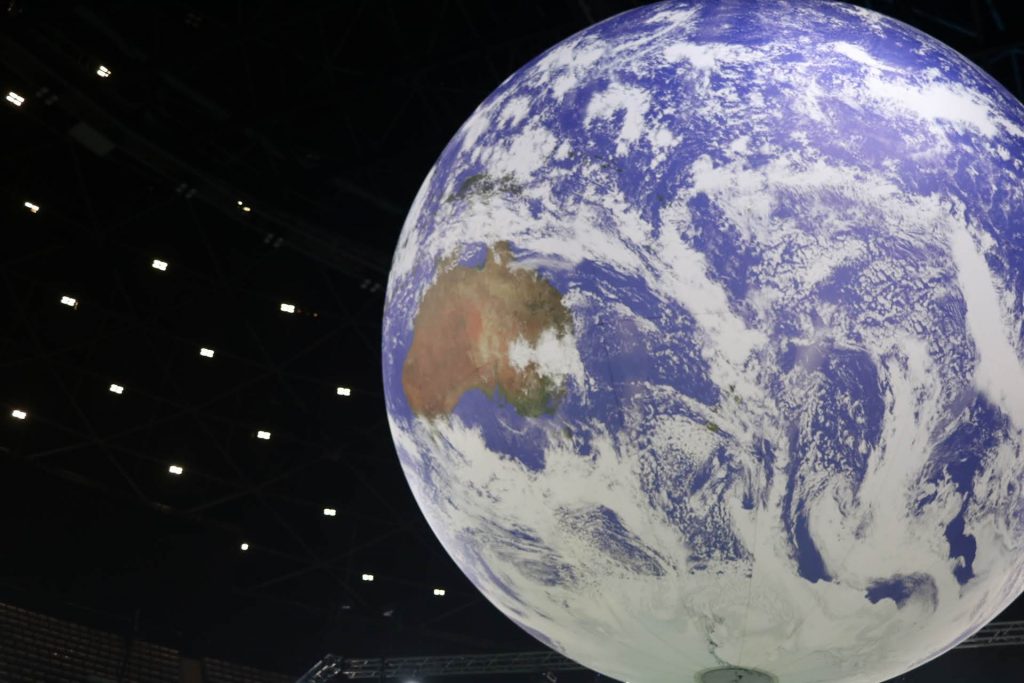
By the time I am writing this, all the best COP puns have been used up. Good COP, Bad COP was probably my favourite and happens to be one of the best summaries I’ve heard so far. Podcasts have been released, high level summaries have been circulated, montage films, LinkedIn posts full of gratitude, reflection and photo memories.
Nearly three weeks after Alok Sharma’s final gavel strike on the Glasgow Climate Pact – what can I contribute?
I confess, nothing original, I was volunteering but I was also what’s called a COP tourist. So this post is for the COP-curious, friends of mine and my future self.
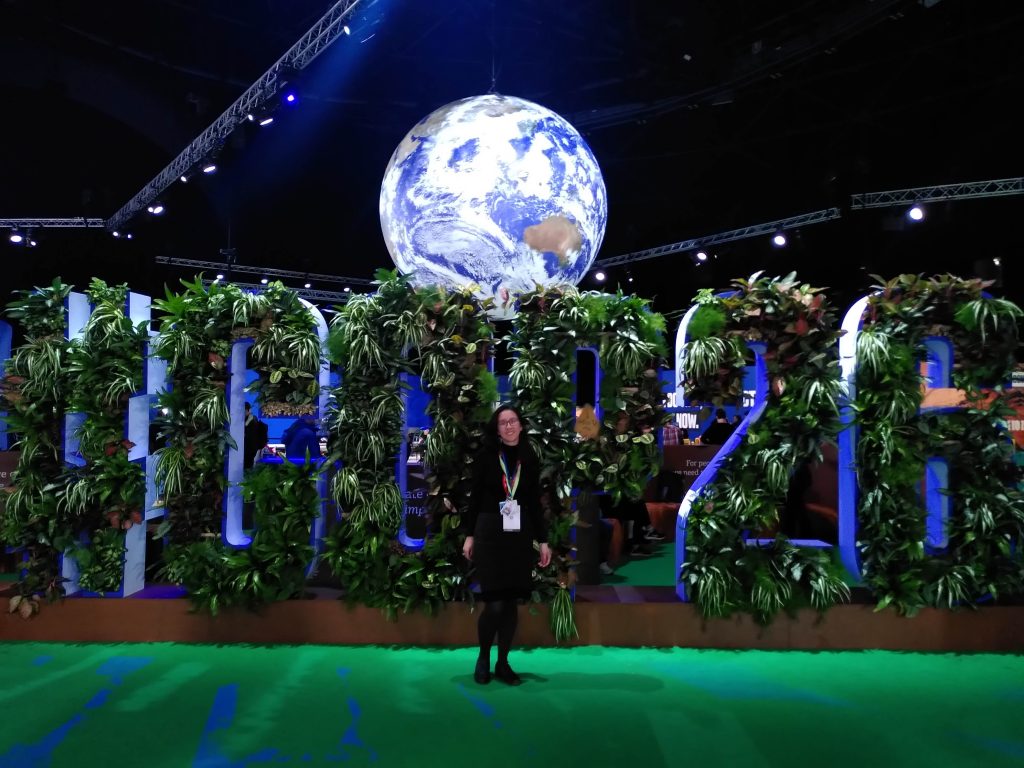
Quick rewind: What is COP?
COP stands for Conference of the Parties and is the annual gathering of the UNFCCC, UN Framework Convention on Climate Change, where representatives from 196 nations come together to determine what they will all agree (or not) to tackle climate change globally.
2021 was COP26, and there have been 25 before that starting in 1994. A cynic might question their effectiveness if there have been so many already while CO2 emissions continue to rise. And in some respects they’re right: at some COPs nothing gets agreed. Such as COP15 in Copenhagen in 2009, when nations failed to compromise and no agreement was made. Along with a timely scandal, the wind fell out of the movement’s sails for nearly a decade.
COP21 in Paris in 2015 was the big one: years in the making, 196 nations did agree to limit warming to well below 2 degrees Celcius – ideally 1.5 above preindustrial levels – and to ratchet up their ambition every 5 years. Overseen by Christiana Figueres, it was hailed as a momentous achievement. Albeit a non-legally binding one. The COPs in the years that followed have focused on thrashing out the details of exactly how to deliver on the Paris agreement, particularly the thorny issue of finance.
COP26, scheduled for 2020 but delayed due to Covid-19, marked the 5 year anniversary. The ratchet year. When a nation hosts a COP, it also takes on the role of COP26 Presidency, so it was up to the UK to oversee the negotiations and try to secure a deal.
Another key element that added to the higher stakes this year was the release of AR6 by the IPCC. Stay with me. Part 1 of AR6, or Sixth Assessment report, was released by the Intergovernmental Panel on Climate Change in August 2021. More than 230 scientists from around the world draw the line of best fit on the latest science and summarise the scientific consensus. The last time one of these was released was back in 2014, before Hurricane Harvey and Irma; before the Great Barrier Reef was considered bleached.
The scientists who are by the nature of their work conservative with language, issued their starkest warning yet.
“It is unequivocal.”
IPCC, AR6
Here’s a light-hearted run down of my COP experience:
When COP comes to town, it’s so much more than the formal negotiations
There’s the official negotiation area, heavily guarded and that’s called the Blue Zone, then there’s a publicly accessible area called the Green Zone. Those areas, the size of small towns, and the COY (COP of Youth), are organised by the UNFCCC. But for two weeks many of the venues across the host city turn into their own mini-conference centres with a wild array of events, art, panel discussions and workshops. The COP26 Coalition hosted their alternative COP for example and so did businesses and other sectors. There was the World Leaders Summit, Global Conference on Health and Climate Change, New York Times Hub, and the Ice Hub hosted by UK b corps.
There is a strong activist presence with public demonstrations usually on the middle weekend. Musicians perform; celebs drop in as well as world leaders.
Think of it, if you will, a bit like a Glastonbury for folks concerned about climate change.
You will never be able to see it all, it helps if you make your own schedule and every venue is a good 20 minute walk away. You’ll be keen to see headliners but you never know what gem you might stumble across. Accommodation is a bit of a mixed bag and so is the food. But the best part? For a limited time, you have permission to speak to strangers. You could approach people at the bus stop, strike up a conversation on the train or in a queue. After the 18 months we’ve had, this freedom felt really special.
When I entered the Blue Zone I left Scotland
After spending week 1 amplifying indigenous stories from the outside, on week 2 I had a pass into the Blue Zone.
Thanks to Craig Bennet from the Sustainababble interview for letting me know I’d left Scotland, I did not realise when I was there. Once I entered through the security of the Blue Zone I was technically on UN territory. I’ve cut down considerably on my travel recently so this trivia felt especially exciting.
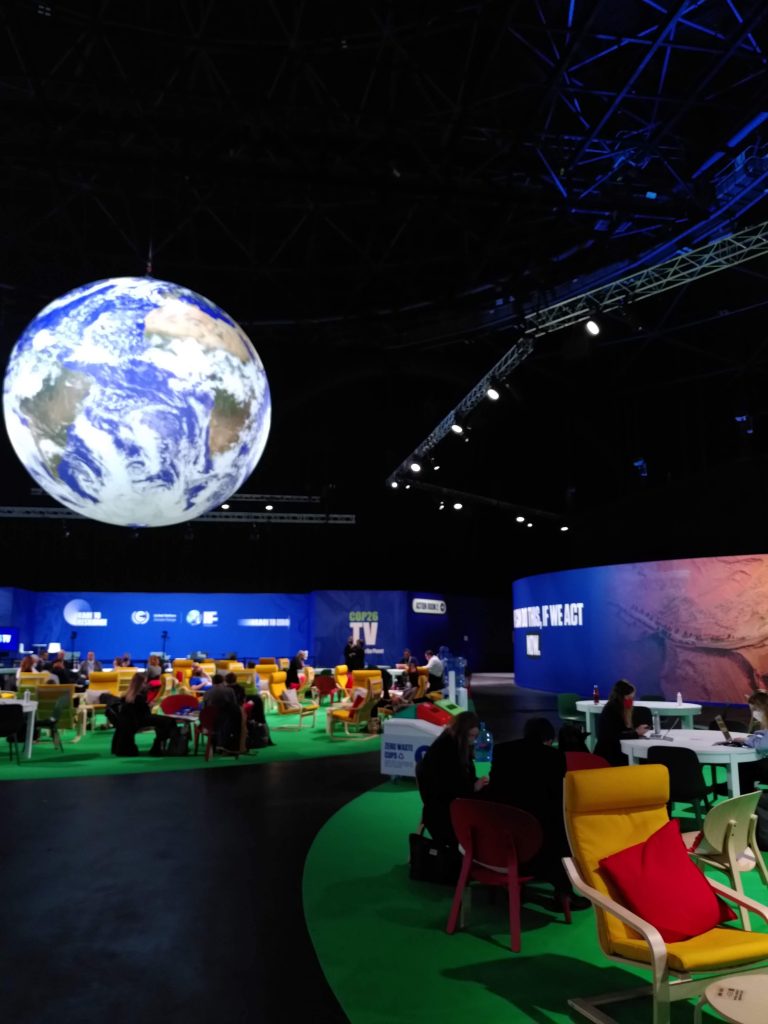
Someone forgot to give the catering the memo
If there was one thing you would not serve at a climate change conference – particularly one hoping to be ambitious on methane – what would it be?
Yes, beef. 🥩🐄
And what was readily available at the grab and go stalls across the Blue Zone?
Beef and horseradish sandwiches!
🤦🏻♀️
The coffee was terrible, haggis was on sale, including a veggie option and a lot of Irn Bru. I mean A LOT of Irn Bru.
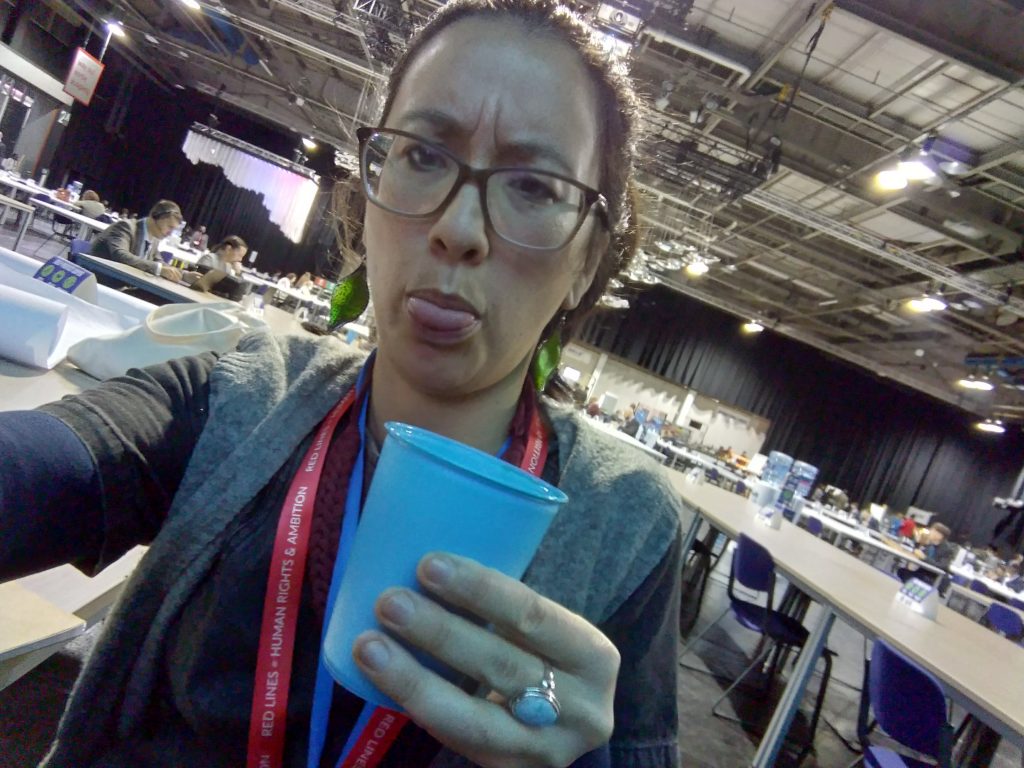
Being in the presence of greatness
So I completely missed Obama, DiCaprio and AOC. But in 1 day I shared a (very, very large) room with Mary Robinson, former President of Ireland and UN ambassador; Antonio Guterres, UN Secretary General; and Vanessa Nakate, youth activist from Uganda. Just like live music, there is something about hearing these people speak in the flesh, and to be part of the audience listening with bated breath. Mary Robinson’s words were hugely validating for me personally.
I managed to squeeze in one of the SheChanges Climate events on creativity featuring Brian Eno, which ended with Sam Lee singing a poignant folk song. Reminding me to feel.
Aside: I also walked past Ed Miliband a few times in a corridor – no bacon sandwich in sight. A reference political satirist Tom Walker aka Jonathan Pie makes in his COP26 sketch, who I met in the Blue Zone canteen. Foul language but it’s well worth a watch, spot the Irn Bru clip below.
Being in the presence of greenwashing
Big business made big announcements during COP. I do believe businesses have the agility and incentive to move faster than nation states, but whiffs of greenwashing could be caught everywhere. Nation states were at it too. From Australia’s pavilion actively promoting a fossil fuel company; Brazil touting its agribusiness knowing that deforestation rates have soared; to the Qatar pavilion hosting a session on technological advances they’ve made ahead of the World Cup (read: street air conditioning). While 3,067 businesses have made NetZero commitments, the pressure is to now on to make sure standards are agreed to avoid hollow promises. It’s called the International Sustainability Standards Board.
Technically, I have spoken at COP26
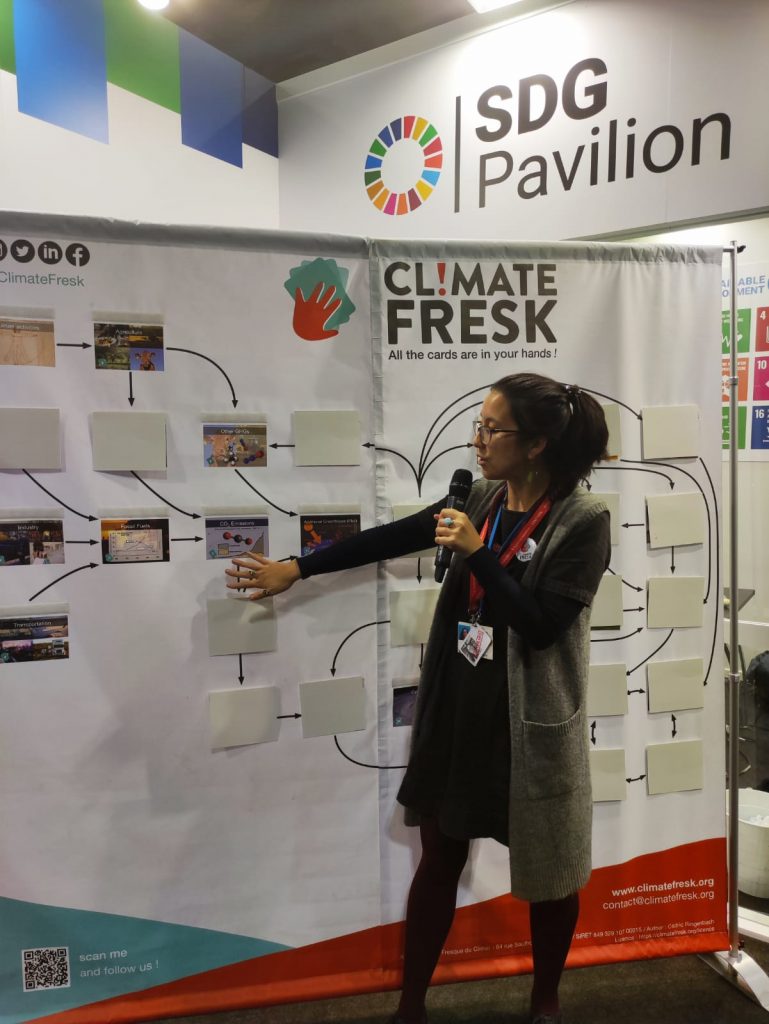
Twice. Thanks to opportunities found by the Climate Fresk, I was asked to represent them on two occasions: at a press conference and at the SDG pavilion. Both sound more impressive than they actually were: one was in a corridor, and my preconceived notions of a ‘pavilion‘ were grossly wrong. Think instead, trade fair stall. But it was still a fascinating experience and I was humbled to be asked.
I spoke alongside youth activists demanding global climate education as mandated in the Paris Agreement, and even at the COP before in Lima called the Lima Declaration on Education and Awareness-raising. I had been at the Lima COP but knew nothing about this initiative. And yet, where is that climate education?
When I think about how much my participants learn in my workshops and how much this new knowledge empowers many of them, I wonder how globally we haven’t tackled this low hanging fruit? It was certainly validation for my current career path.
Outside vs inside
My two weeks at COP26 were very jarring. Week 1 I was supporting indigenous networks and amplifying their messages mostly outside the official spaces. The ‘outside’ were deeply critical of netZero, calling for the need to put equity at the heart of all decision making and demanding reparations.
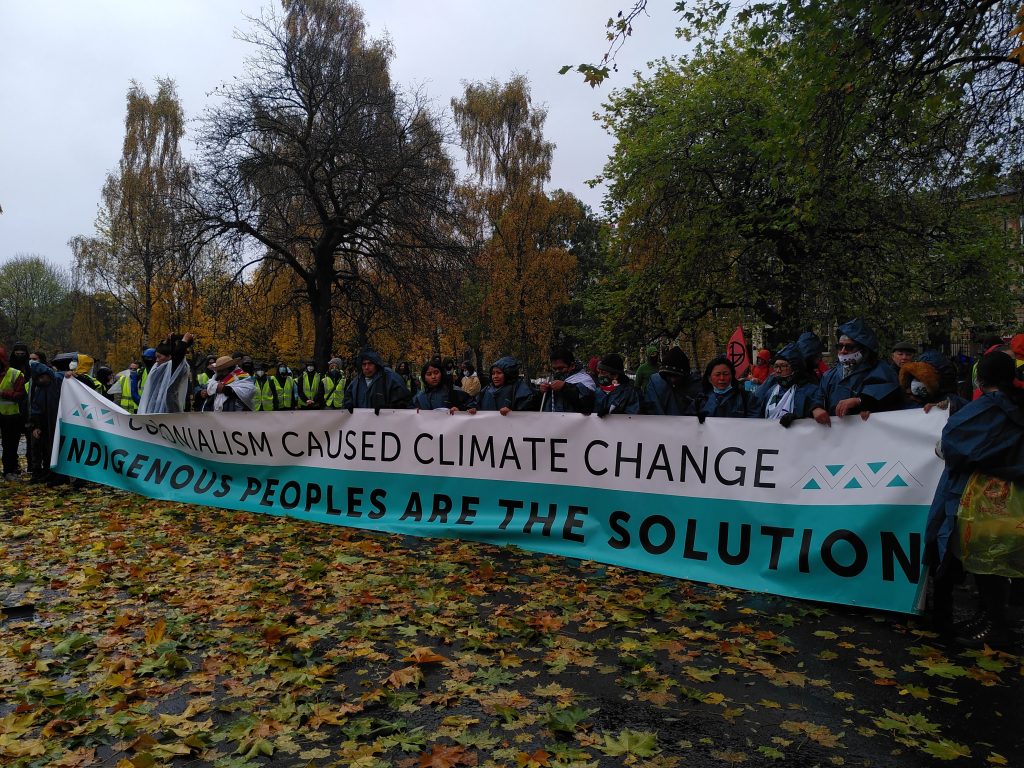
I have been to two prior COPs but this was my first time going inside. I was in the Blue Zone, complete with the elitist badge and a daily negative Covid-19 test, stepping over protesters to get through metal revolving gates and past lines and lines of security. Heckled by those on the outside demanding a strong deal. I was suited and booted in my corporate attire, rubbing shoulders with business leaders, politicians and civil servants. Learning that fossil fuel lobbyists outnumbered any other delegation and hearing of its soulless atmosphere, I was very wary of being inside.
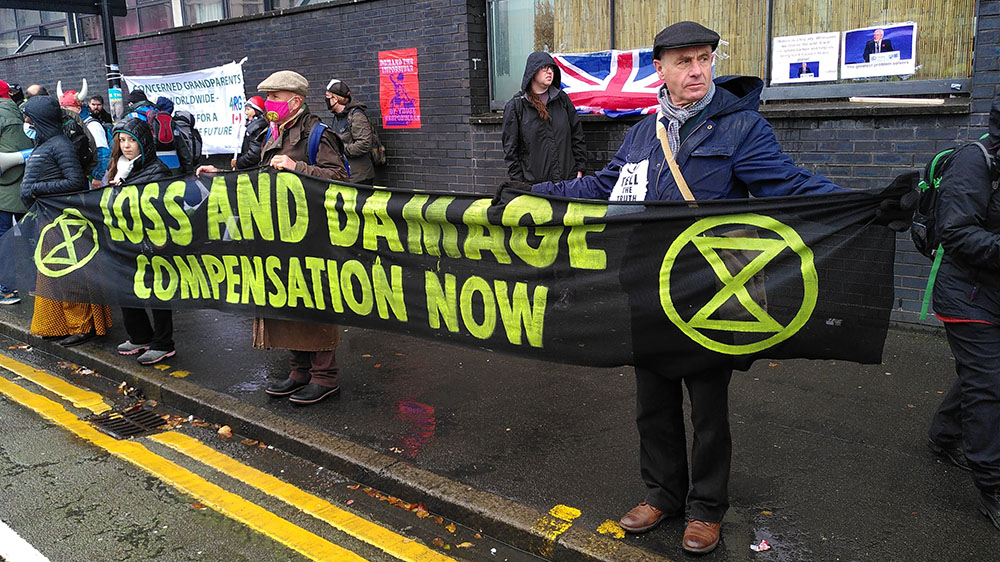
After collecting my swag, the first feeling was overwhelm. People walking assertively across a huge expanse and lots of meeting rooms with schedules on scrolling TV screens, followed by an area where nearly every country had its own pavilion, as well as Cryosphere, Peat, Commonwealth, Business and more. Think of it like an Epcot Centre but less cute. And each of these pavilions had their own schedule. My first day in the Blue Zone I managed to go to a total of zero events. By the time I found something I thought I could learn something from, it had started 5 minutes ago and it was 20 minutes walk away.
By day three I realised I’d not left the Pavilion arena or the canteen. COP first timers must have a similar look about them because a stranger took me under his wing as I queued to get into a plenary room. He showed me the etiquette of where to sit and not to sit and what could be expected in the upcoming meeting: informal stocktaking plenary by the President. A room so vast, 196 nations are represented in alphabetical order as well as public body institutions. I sat behind Indonesia. By the second Thursday of negotiations the drama was picking up. Papua New Guinea would request an intervention and speak very politely how the current text was favouring rich countries; the European Commission showed a photo of his grandchildren; everyone was silent for Saudi Arabia’s intervention but clapped after the Marshall Islands’. It was fascinating picking up on the nuances. John Kerry was in the room but as more negotiators turned up, I forfeited my seat and left reeling.
I learnt that there were great people in the Blue Zone, just as there were outside. I felt the two discourses diverging further and further apart. But I also found bridges – people who spanned two worlds or more: indigenous Ecuador and Seattle; Brazilian community and financial investors, engineers and activists. I asked one person whether it wasn’t duplicitous to have these two personas. His reply: “It’s two languages but the message is the same.” I have always felt somewhat of a shapeshifter, but in my twenties put it down to the conditioned need to be liked by everyone in order to fit in everywhere. Now in my thirties (and lots of innervism) I am starting to think it might be a strength to have my feet in two worlds.
Empathy for the negotiators: it’s very hard to get everyone to agree
Making decisions in groups is hard: for example how long does it take 7 well-meaning people deciding where to go for dinner? Now raise the stakes exponentially and invite representatives of 196 nations together, from different cultures, different political and economic priorities, and different lived experience of climate change impacts.
Perhaps this is naive of me but the divisive rhetoric, found not only on climate in the media and also by populist politics, is insidious. So in what world did we really think 196 nations were suddenly going to agree on a progressive agenda on something that strikes at the heart of the system they are there to perpetuate?
Craig Bennett described the final agreement as the ‘lowest common denominator’, the baseline raised for the rest of us to work from. Recall that this COP’s aim was to simply keep the idea of a 1.5 degree world ‘alive’.
I don’t think that has to be as disheartening as it sounds.
I left Glasgow on the final Saturday, saying goodbye to my wonderful Human Hotel host, who had generously let their home out to 4 COP attendees at next to nothing; a powerful antidote to the price-heists happening on Airbnb.
Physically exhausted and emotionally strung out, I streamed the final day of COP on the train home. While waiting for the plenary, watching the camera silently zoom in on John Kerry, and Chinese veteran negotiator Xie Zhenhua, I was flicking back to The Guardian live blog as journalists who are used to lip reading were trying to fill in the gaps. As “phase down” vs “phase out” of coal was being squeezed in at the last minute, I could feel the tension as some countries responded with their criticisms but relinquished in the name of compromise. Alok Sharma appeared emotional but I couldn’t help thinking that too much Irn Bru and too little sleep might also have been a contributing factor ?
Words were watered down but the world has tolled the final bell on coal, and a pathway to loss and damages (reparations) was on the table.
I found myself crying at the Marshall Islands’ intervention.
Over socialised, over stimulated, overtired and just a tad hungover I could only feel the whirlwind of experiences over the last two weeks.
I’d built in days of recuperation afterwards and after a few walks in nature, solitude and the sounds of trees I found the fog clearing. COP26 had raised many questions for me, personally and dare I say it spiritually?
What had happened? Was it a failure? What role have I played in it all since my first COP back in 2014? What role should I, could I, play now? What is being asked of me?
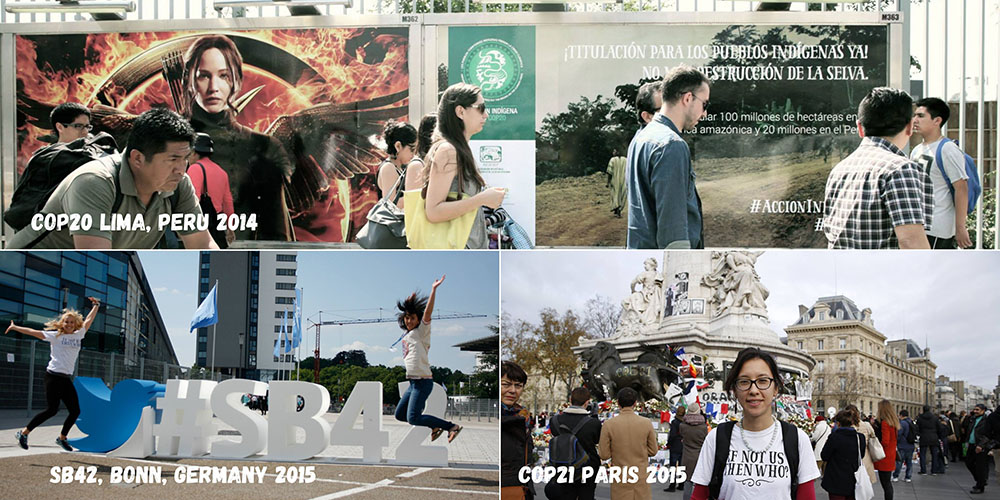
I explored the mental gymnastics of Amitav Ghosh’s essay scanning for answers:
“Let us make no mistake: the climate crisis is also a crisis of culture and thus of imagination.”
I had absorbed all the cultural ideas of my time, unquestioningly. Mainstream education stripped me of much my imagination and self-belief. I found myself seeking external validation in the form of A*s or good performance reviews, promotions and higher salaries. I thrived on the hustle, multi-tasking, working long hours until I was exhausted. Busy was a status symbol I aspired to and my worth was directly aligned to my productivity. I believed I was entitled to ‘escape the grind’ by going to faraway places and while I began to shun the consumption around me with my privilege, I still fell for a rat race of experience, clocking up huge amount of carbon emissions in the process.
“Culture generates desire.”
Amitav Ghosh, again
We need new cultures, new stories, new choices. Or maybe just new-ish.
I’m going to be more proactive to carve out my new culture and protect it. That means I am going to get on that Trees For Life planting week I’ve been telling myself; I will show up to the next WI meeting; I will take next Wednesday off and go enjoy the Christmas markets. And the first week back in January will be a dedicated reading week for the team.
I want to proactively start dropping ‘old culture’ words and phrases from my lexicon, such as smash, dominate, onwards and upwards, no pain no gain, give it a shot.
And I want to keep writing. Sharing my stories and those of others as well as stretching my imagination into the realm of fiction.
The hustle will creep in again, but I can choose to opt out, more often.
“More often than not, by doing your thing – as opposed to what you think you ought to be doing – you kindle a fire that helps keep the rest of us warm.”
Oliver Burkman
Some useful resources on COP
UK perspective
US perspective (as recommended by Allison)
Speech from Mia Mottley, Prime Minister of Barbados
CarbonBrief: Analysis: Do COP26 promises keep global warming below 2C?
